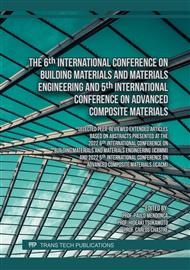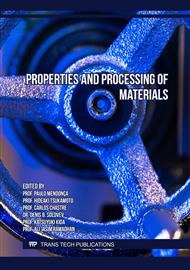p.97
p.105
p.111
p.117
p.125
p.131
p.139
p.145
p.151
Energy Efficiency of Concrete with Phase Change Materials
Abstract:
Nowadays, our society has the responsibility of reducing the energy consumed in the building sector. A promising technology to achieve this goal is the implementation of thermal energy storage (TES) solutions in buildings envelopes. Phase change materials (PCM) which act as a thermal buffer, take advantage of the melting temperature of the material to change its state, improving building energy efficiency. This work explores and investigates how with a cheap PCM material, such as surf wax, high impact thermal results are obtained. To check and verify this condition, two concrete specimens were prepared with treated PCM aggregate and two without the PCM. The four test cubes were placed in an oven and using thermal sensors, the data about the temperature evolution during the process of heating and cooling was collected for further analysis. The results between the PCM concrete samples and the samples without PCM were compared, verifying the promising performance in terms of energy impact.
Info:
Periodical:
Pages:
125-130
Citation:
Online since:
April 2023
Authors:
Price:
Сopyright:
© 2023 Trans Tech Publications Ltd. All Rights Reserved
Share:
Citation:



